APOGEE ACOUSTICS DIVA
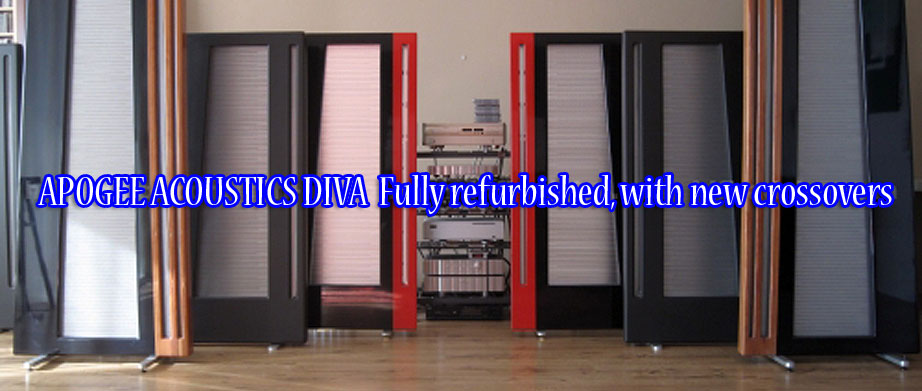
Compared to 2 pairs of Duetta Signature
(Refurbished and Original)
With the purchase of these refurbished Divas I have almost come to the end of my investigations for the Apogee Listening Sessions. The refurbished Duettas really are fabulous, but have some flaws that I hoped to address with the Divas. The latter really are magnificent but, like any speaker, have strengths as well as weaknesses. They are just in very different departments than with the Duetta Signatures.
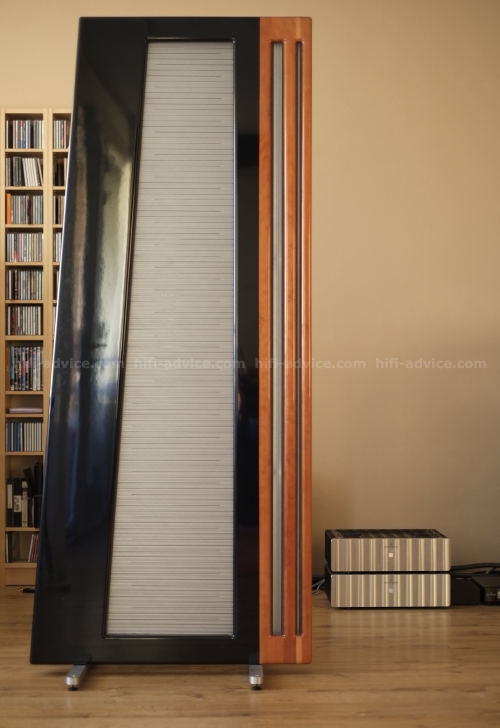
Foreplay
Divas have been on top of my Apogee wish list from the start, but on my searches on the second hand market, for a long time I only found original pairs: dull matte grey finish and original ribbons. I didn’t really dare obtain an original set for three reasons. 1. Age: Divas were produced from 1988-1995, which makes them 18 years old at best. 2. Price (original sets range from 3500-4500 euro) and refurbishing will cost at least that same amount. Reason 3 was that of all three sets of Divas that I had heard so far, none sounded as open and airy as any pair of Duetta Signatures, be it originals or restored ones. One could argue that the Duettas could simply have too much treble, but they are consistent in treble energy with other Duettas as well as Magnepan MG3.6R’s. The Diva’s true ribbon tweeter is almost exactly built in the same way as the modern Magnepan true ribbon tweeter. So why would the Divas sound darker? I figured that it must be related to driver sensitivity or choices made in the crossovers.
As I learned by now from experience with Duettas and Centaurs, the ribbons themselves can actually live long, happy lives. Even the bass panels. But the problem lies with the foam damping strips that are sandwiched in at either side of the membranes, together with a dose of silicone sealant. These foam strips deteriorate, much in the way that a woofer surround couples the cone to the gasket. Some speaker brands used foam instead of rubber or paper for this (Bose springs to mind) and over time this foam loses viscosity and becomes sticky and ultimately (15 years+) turns to pulp, which, if touched, literally vaporises before your eyes. In case of dynamic woofers, the result is honky sound and possibly even screechy sounds as the voice coil scrapes against the magnet. In case of Apogee Ribbons the foam deterioration is similar, but because of the different application, the result in my experience varies from no audible problems at all, to very mild problems (only audible on certain CD’s with certain types of low bass). From reading forums I know that the effect can even become intolerable (always audible buzz) but I have yet to encounter this myself.

It’s like a forest, which is why I call it the “Apogee Woods”. Lately friends consistently aks me if I have planted any new trees… man, this hobby is getting out of hand..
Aquiring the Divas
It really helps if you know the right people. After Michel had introduced me to Niels and his Full Range setup, he has now brought me into contact with someone who was selling a pristine set of Divas, completely overhauled. New ribbons, new foils, Cardas wiring throughout, new Crossovers (better treble I hoped?) and new cabinets. The latter really are something special: they consist of a combination of solid Cherrywood and MDF. The transition between the two is perfectly smooth and the whole is covered in piano laquer. What’s more: even the crossovers have been re-built and have beautiful cherrywood cabinets. These speakers truely are a piece of art and from their impeccable finish it’s evident that the cabinets are constructed by the same person that did Niels’ Full Ranges.
After the seller of the Divas and I came to an agreement, we planned for a listening session, using moderately powered Jadis preamp and poweramp (types escape me) and a Wadia 860. The resultant sound was pleasantly smooth and rich, but lacking power and drive. Treble was ok: quite allright off-axis but not very airy and a bit toned down in the listening spot but at that time I guessed that this was more the result of the already darkish Wadia 860 coupled to less-airy-than-rowland Jadis amps in a less than perfect set up. So, I played a few tracks, most importantly the one with which I know that the bass ribbons will buzz if they have a problem and decided that I wanted them.
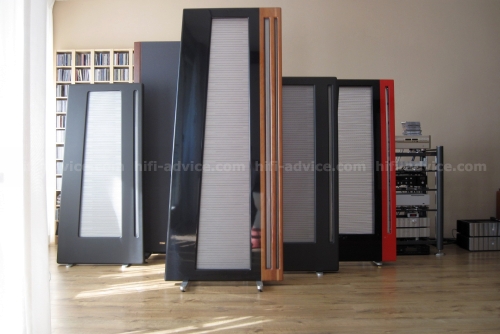
Apogee Woods from a different angle – it’s going to be boring over here when only the Divas remain…
Transport
When it was time to load the speakers into the car I realised I had underestimated the effort involved. Not only was there more than 70KG weight to reckon with but there were no crates or boxes so we had to be very careful not to damage the beautiful laquer in the process. We decided to take one speaker at a time. They really are beasts: they take up all available space of a large Volvo stationwagon: we even had to drive with the rear door open. All went well and a few hours later we had moved both speakers and all the associated stuff from the previous owner’s place to my place. I was so consumed by the process that I entirely forgot to take pictures of the previous owner’s setup as well as the move itself. Ah well, you get the idea…
Set Up
It’s possible to get these speakers up on their feet with only two people, but I really recommend three, to minimise the chance of damage. If it starts tipping over, there’s no way that one person can stop it from falling. They have to be stood up straight, then titled while the footercage is moved in position under them. Then, while two people hold the speaker up and carefully move it in position, the feet are attached by means of 4 screws. Don’t think of inserting the spikes without using protective cups under them – with the weight they’re carrying, the spikes will pierce any wood or laminate floor, and your thumbs along with it!
First position was roughly in the same place as the Duetta Signatures but there was poor focus and little layering to speak of. After moving left, right, back and forth all night, the best position turned out to be with the tweeter in almost the same position as the Duetta Signature’s MRTW ribbon. The Diva’s midrange ribbon will thus be further apart. Placing the Diva’s midrange ribbon into the old Duetta Signature MRTW’s position made for a narrow soundstage with a forward midrange and lack of spaciousness.
Even after the “optimal” position was found, I kept moving the speakers in all directions for hours but couldn’t find a spot where they had focus and soundstage layering as good as either original or refurbished set of Duetta Signatures. There is some focus (not an entire lack thereof), but it is not razor-sharp and seems to lack coherence, and this reminded me of what I heard with the Full Ranges at Niels’s setup. That, I so figured, wasn’t merely a matter of acoustics, listening distance and room size, but also perhaps of speaker complexity. It seemed that having separate ribbons for midrange and treble would make for a less focused sound. I would later learn that there was another major contributing factor.
In addition to the less than Duetta-like-soundstaging, there was something else that bothered me. You probably guessed it: treble. It’s not that the Divas are dark per se, but I would say that their treble ribbons are definitely toned down in output. Because my Magnepan MG3.6R’s have very similar treble ribbons and have superbly open treble with lots of air, I figure that the root of the problem must be in the crossovers, but for these Divas, those have been rebuilt! So, apparently, whatever treble energy reduction was present in the original crossovers, carried over into the new ones. It wasn’t until the third day that I noticed how the treble was nicely open and airy on axis (right in front of the speaker) and dulled in the sweet spot. It reminded me of comb-filter effects and then of out-of-phase problems. What if the treble wasn’t in phase with the midrange? I decided to inspect the crossovers and see if something can be done.
Update december 2013
As it would later turn out, not only my speakers, but also Niels’ Full Ranges, had phase problems. But please read on for the whole story.
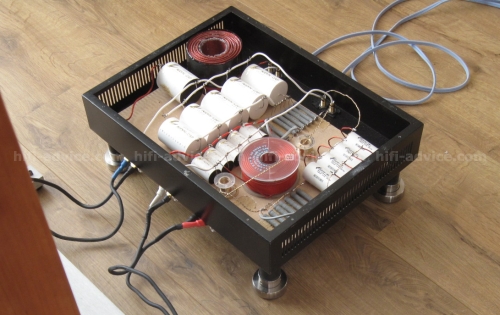
Wiring was colour-coded by the restorer and I initially just wired the speakers up accordingly. As can be seen in the image, by now I had reversed the tweeters already but more was to come…
Diva treble characteristics
The treble dullness that I hear in all Divas is surely not a defect, or a defect in my hearing for that matter. At this moment I have 3 sets of Duetta Signatures in the room, along with the Magnepan MG3.6R’s and in the other room I have B&W Nautilus 804’s and 805’s. Compared to either Duetta pair or the Magnepans, or even the N804’s, the Divas sound audibly rolled off without the treble resistor-bypass. But it’s not the first time I hear a speaker sound this way. The big and costly B&W 800D’s were the same. As were the Avalon Eclipses and I recall a few other instances in which I felt this way. So, it’s not my ears, or the room, rather, it must be a design choice. But likely not something reviewers would normally comment negatively about.
I did read somewhere that a respected reviewer commented that the Divas don’t have exaggerated treble, but that they’re just pure and natural, as treble should be. Of course it’s all relative, about design choices and personal taste plays a large role as well. So, are Divas dark-sounding? This depends on your personal experience and taste. They don’t really lack treble – it’s all there, to these ears it’s just toned down a bit and lacking some air. And I don’t feel like that with the Duettas or Centaurs, or with the Magnepans for that matter.
But as you can read below, for me this is no longer an issue as I fixed this by means of substituting a different value for the treble resistors, resulting in treble on par with Dueatta Signatures, if still not on par with Magnepan MG3.6R’s.
Troubleshooting – Treble
The crossovers that came with this set of Divas were not original – they had been rebuilt using better components. All the adjustment switches had been removed in the process leaving me with the question: what fixed position were they now in? Judging from the lack of real treble energy I figured that treble had to be in the lowest position and from looking inside the crossover box, this did indeed seem to be the case as there were a plethora of resistors in a combination of series and parallel connection in the circuit leading to the tweeter. I bypassed the resistors and you guessed it: we now had excellent treble, airy and refined yet very articulate. But still there was this strange phenomenon that the treble was only good off axis but absolutely dulled in the sweet spot. This would later turn out to be a phase problem.
In an effort to rule out problems with the Diva’s new crossovers, the first thing I tried was to connect the Duetta Sigs’ external crossover to the Diva, effectively making the Diva a 2-way speaker, leaving the treble disconnected. But since the Diva’s midrange seems to be a longer version of the Duetta’s MRTW, there would be no harm done. Actually: the sound improved a lot! The soundstage was more coherent, wider and deeper and overall more 3D and treble was also more open, in spite of lacking a pure ribbon tweeter this time. Also: there were no weird phasey problems anymore: treble energy was stable no matter where I listened, also in the sweet spot. Now I knew for certain that there had to be something with the new Diva crossovers.
As hinted at above, I suspected that the treble foils were connected with incorrect phase. Empowered by the positive outcome of using the Duetta Sigs’ crossovers, upon reconnecting the Diva’s crossovers, I decided to just connect the tweeters the other way around. Guess what? Treble was now nicely open and airy! But the best thing was that I now heard excellent treble both on axis as well as in the sweet spot, and what’s more: soundstage focus and layering had now also greatly improved.
Update December 2013
Once I was able to precisely obtain the values of the resistors, inductors and capacitors used by Henk in my crossover, comparing them to schematics of the original Divas, it became clear that my ears had not betrayed me: let’s say that several liberties were taken with the values. For example, treble was on a lower setting than the lowest one in the original crossover and more importantly, midrange uses a 10 times higher value for the serial inductor than in the original design. There were various other deviations and while they might work together to create a new, balanced, sound, I am not convinced and am currently in the process of selecting parts that match the original values. I will report back once done.
Whether or not this was all done on purpose, at the client’s wish, or by mistake, I don’t know. But the fact of the matter is that apparently the restorer didn’t notice the phase problems, nor did the previous owner. Or perhaps it was the very reason for selling them on. Whatever the reason, I was happy to have found the culprit of the treble problem but there would turn out to be more to come…
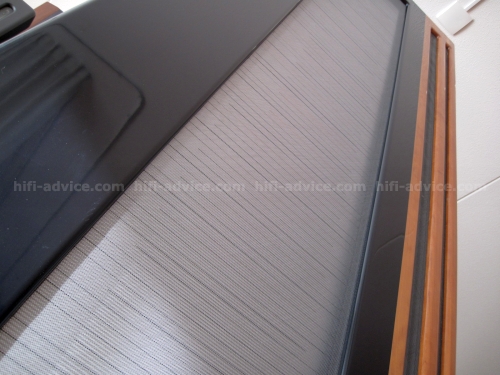
Troubleshooting – Midrange
Next was the midrange. Like with the treble, I had no way of knowing what position the switches were fixed in. But I found the midrange to be a pretty laid back compared to the very lively Refurbished Duetta Sigs, and even so when compared to the original Duetta Sigs. so I experimented with bypassing the resistors. There are two resistorgroups in series which affected different aspects of the frequency spectrum when bypassed. One group added lower midrange, the other the higher midrange. It was quickly evident that entirely bypassing both groups resulted in a very lively midrange, but with some screetchyness when playing certain sounds. Not surprising, because one of the resistorgroups was in parallel with a coil and as such apparently forms a notch filter, designed to suppress peaks on certain (crossover) frequencies. Eventually the best solution was to retain this notch filter but change the resistor values. This I did by trial and error, using various values of high end Mundorf Supreme resistors, but because these are very expensive at 13 euro pp (and the need to use multiples per crossover) I first broadly decided on the value by means of a variable resistor. I then bought a range of values starting below and ending higher than the value I measured and soldered them in. Over the coarse of two weeks I closed in toward a more balanced sound and by now I think I am very, very close. I’m taking my time but I could be one more tweak away from perfection. It would be interesting to measure somehow at what position I have then ended up with respect to the original filter that I sadly don’t have at hand. But in the end, all that matters is how it sounds to my ears.
Now that treble and midrange were closer in openness to the Duettas, the only remaining item for me was that the Duettas sound fuller and richer in the bass. This is very much a feature of the Duetta, but one substantiated by the components used in their rebuilt crossovers in case of the Refurbished set. The latter even cause a severe room-mode excitement which all other Apogees (original Duetta Sigs included) don’t do. For the bass, the previous owner uses a Jansen Wax Copper Foil Coil whereas the rebuilt Diva crossover uses an Intertechnik Tritherm braided litze Coil. The techniques couldn’t be any more different. Of course this is a matter of taste and one might well have a preference for one over the other. My guess is that the Inter Technik coils used in my Diva crossover are more accurate but also causing the bass to be less voluptuous than it can be using the Jansen foil coils. Also, I suspect that the imaging can be improved (or at least, changed in character) by this coil, as well as by carefully replacing some caps with other brands. This is admittedly all going a little bit over the edge, and I’m quite happy with how they sound now, so that might be an experiment for another time. The good thing is that, due to the crossover being external, such changes can always easily be reverted if need be.
Update December 2013
After I had intentionally lowered the resistor values for the midrange, in an attempt at making it more open-sounding, and more on par with the Duetta Signatures, I would find out that the midrange was actually wired out of phase, which in hindsight accounted for the lack of presence. This would in turn prompt me to use a higher resistor value again for the midrange. But I’m getting ahead of myself.
Now that I was happy with the treble and almost content with the midrange, there was still one area that I wasn’t entirely happy with…
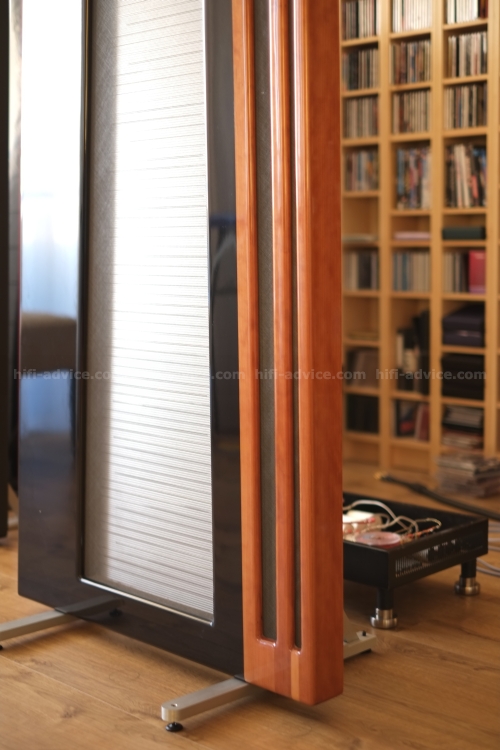
Power
The Divas go seriously loud. In fact I have not yet met their limit. The official specs state that a 100-watt amp, capable of 20 amps, is recommended. The Sixes have 150 watts and can deliver 50 Amps. As such they would seem overly powerful already but because the Divas just never run out of headroom! I suspect that they could work with even much more power without fear for breakdown. As Michel already noticed with his Divas (using 4 Rowland “Ice Power” 201’s): he can crank up the levels to his heart’s content, without any ear ache. That’s just a testament to how pure and undistorted the Divas sound. On my turn I also noticed that when I had “misbehaved” this way, that my ears never grew tired, and that it always went without any subsequent ear-ringing, as can happen with big dynamic speakers. But enough about power. Let’s discuss the finer aspects of these wonderful speakers.
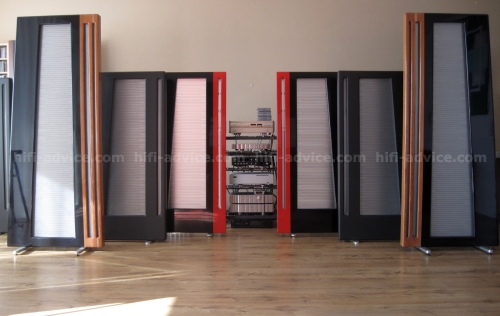
Resolution
Before I modified the Divas’ crossovers, contrary to either set of Duettas (originals or refurbished), the Divas didn’t sound very open when playing very softly. They seemed to need some kick in the butt before taking off. After I changed the resistor values in the crossovers, the Divas now sound much more open but still they apparently like to play a little louder than the Duettas. Nothing to worry about though because I’m not talking LOUD, just not whisper-quiet, which the Magnepans actually do better, and to an extent, so do the Duettas.
But I can’t help but think that in spite of the presence of a similar true ribbon tweeter, the Divas’ low level resolution is sligthly less than that of the Magnepans. Then again, perceived resolution is often a function of treble openness, and just this area I find to be a little lacking. It’s not only me by the way: if I remember correctly, a well know magazine’s measured response shows a marked treble decay from around 12 kHz, in spite of the speaker’s quoted +-3dB 25 Hz-25 kHz spec. But this probably has been counteracted by my bypassing the tweeter resistors. The Diva’s treble, as well as the Duetta’s, seems to be more articulate however, more rhythmic (more accurate?) than that of the Magnepans. It might also be the case that the Magnepans sound more smeared in the treble and therefor seem to be more liquid, and conseqently, more resolving. But this is slightly nitpicking and the Divas really do have excellent treble, definitely better than any dynamic speaker I know. Overall, the Divas have very, very good resolution, but it is not up to the latest Martin Logan standard. Then again, in my opinion there’s no Logan that sounds as acoustically convincing and life-like as almost any Apogee. There’s more in life than treble air and overall resolution, such as midrange quality!
Midrange
Arguably the Diva’s strongest field is their midrange. Unsurprisingly perhaps, since it spans all the way from 550khz up to 12khz, so almost producing the sound of most instruments and vocals entirely in one driver. The Diva’s midrange is extremely lifelike and natural. It’s also uncolored and neutral, but not thin or threadbare nor metallic and shouty. The dynamic range is spectacular: voices are tracked with lightning speed, they can be mellow and intimate and full-on storm level but never does the midrange harden up. Voices are wholly convincing while offering much of the exciting live-feeling that I experienced with the Duetta Sigs and even more so with the refurbed ones, albeit much in a more natural manner. In comparison, the Refurbished Duettas are lean-sounding, slightly metallic and a bit shouty. I already mentioned in the Duetta review that their timbre is spot on, which is certainly true when comparing to Magnepan MG3.6, but after having heard the Divas for a week and switching to the Duettas, I wouldn’t rush to say that anymore. That’s just how superbly natural the Divas are. They make other speakers sound coloured and uneven.
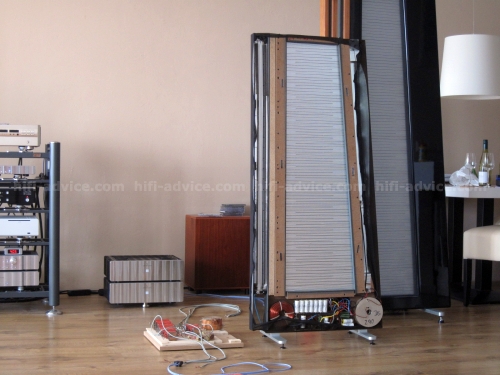
Duetta Crossover swapping
That said, it wasn’t until we connected the newly built Duetta crossovers to the original Duettas that we had an ear-opener. We were shocked to hear how much the sound degraded! Sure, bass was fuller and the midrange was more forward and lively but the transparency and more so the coherence was greatly reduced, not to mention that the original set now also sounded screetchy and way too forward. Stop the clock – this meant that my initial assessment of the refurbished Duettas was flawed due to the “wrong” crossover. After some correspondence with the Duetta’s previous owner, it became clear that he had removed some components from the crossover, in an effort to make them purer, and according to his ears, more transparent. But in the process it also made the MRTW much louder than it should be. I guess this was much of a system synergy thing because to my ears, the new crossovers actually sounded less transparent and not at all more detailed. It does also, to an extent, explain the midrange shoutyness.
Update December 2013
We will try to revert the new Duetta crossovers back to the original values and once done, I will report back.
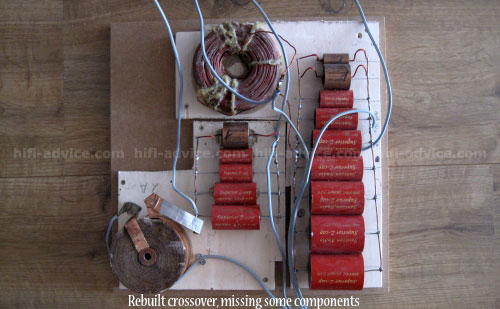
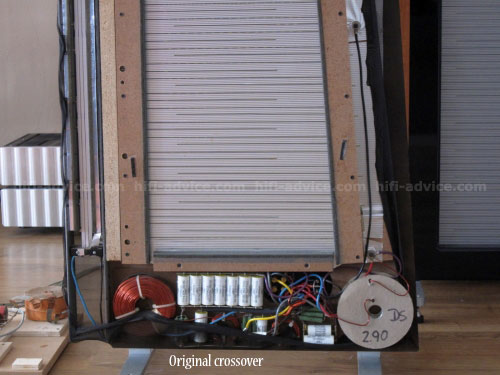
So, comparing the Divas to the refurbished Duetta Sigs was unfair and trying to obtain the same “lively” midrange would be impossible unless I, too, would bypass more components in the crossover. This, I was not prepared to do. Also, comparing the Divas to the original Duettas was much more fair and also quite an ear-opener. The originals, like the refurbished ones, have a get-up-and-go that the Divas seem to lack. Their sound is just more coherent, of one apparent source and a little bit more explosive. But the arguments stated above regarding metallic sound still hold true, but to a much lesser extent. Still, after hearing Divas, most other speakers’ midrange will probably sound less natural.
Update December 2013
After I had done some more phase-connectivity research, later it would turn out that the Divas can actually sound just as coherent as the Duettas, refurbished or no. Imaging, too, is at the same level, at least. And that’s in spite of the 3 way crossover and the doubts I had about that. What’s more: the Divas now have a deeper sense of layering in the soundstage than the Duettas do.
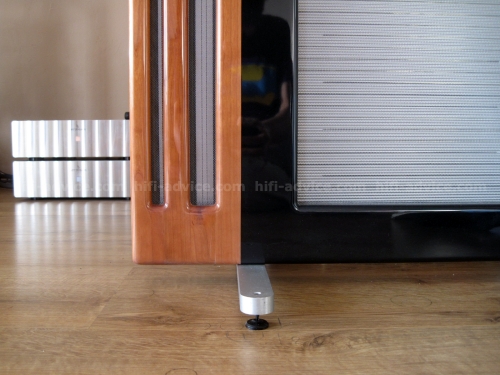
Back to the Diva – More Listening
Other than having less balls in the bass the refurbished set of Duetta Sigs, the Divas really are spectacular speakers. For starters: there’s not a hint of the brittleness and shouty forwardness that is present in JW’s refurbished Duetta Signatures. This is admittedly due to the no-standard crossover, but the original Duetta Sigs also sound a little too clean, too lean in the midrange, when compared to the Divas. The Diva’s treble is pure and utterly distortion-free. I guess we can state that apparently the new Graz ribbons are not inherently metallic or rough-sounding. Oh, and on the subject of soundstage: like the Duettas, the Divas are less wide and room-filling than Magnepans. The latter always sound big, even with CD’s not recorded that way. Some people don’t like that but it’s fine by me. All Apogees I heard are different: they don’t sound big unless that’s a property of the recording. But you better believe the Divas can really fill the room if asked to! The Duettas were already capable of throwing a large stage but the Divas go one step further toward that live feeling. Also they do provide good layering in the depth plane, definitely on par, if not better, than the Magnepans. Bringing to mind the Avalon Eclipses, I think they had even better layering and staging in all directions, but they couldn’t touch the Divas’ lifelike timbre, dynamics and neutrality.
Dynamics
All Apogees I heard are champions at dynamic contrasts. Part of why this is the case if probably that they are very fast and make use of extremely powerful magnets. The Divas, albeit less explosive than Dueatta Sigs, are no exception.
Bass
Even if the Divas have almost twice the bass radiating area of the Dueatta Signatures, they actually don’t sound bass-heavy at all. Rather, neutral and well-balanced, perhaps even a little lightweight in the bass. It’s a bit surprising at first to notice that they sound a lot less voluptuous than the refurbished Duetta Sigs. This is partially a function of the different components used in the crossovers but probably mostly due to their design. The Duettas have quite a severe bass resonance that you may or may not like. I certainly don’t mind it. There’s no denying however, that the Diva’s bass is of much higher quality: it is more nimble and articulate, and it never booms. The frequency range is totally even from the lowest bass to the midbass. But boy can these speakers go low! The claimed 25hz-25khz +/-3dB is clearly no empty marketing boast. Sometimes you’re listening to neutral-sounding music and the bass doesn’t call attention to itself. Then, out of the blue, the speakers can hit very low notes with incredible power. Listening to Divas made me realise that the refurbished Duetta Sig’s bass is perhaps trying too hard. There’s at least one very big resonance peak in the Duettas bass. And this sounds very inviting at first, and that you will even miss it when it’s gone, but compared to the Diva’ bass, the Duetta’s bass is uneven, boomy and peaky. Nevertheless I still am amazed at the amount bass coming from those panels. Quite a party trick really. But to be honest, no matter how much I like it, the Refurbished Dueatta’s bass is overblown. The Diva’s bass on the contrary is perfectly balanced amd undeniably of much higher quality. It is much more like listening to headphone bass, where the room doesn’t seem to have any impact on the sound. Pretty special. The original Duetta Sigs by the way also have more bass than the Divas but unlike the Refurbished ones, they don’t boom or shout.
They don’t demand a subwoofer, but I like to use my subs with the Divas anyway. Partially because I had grown accustomed to the Magnepans with subs, and later because the Duettas had so much bass that the subs weren’t needed. My room has some mild cancellation in the lower regions and the subs can nicely fill them in, if carefully adjusted. In case of the Divas I have them set to 30hz: above that the speakers already take over. Wonderfully enough, the Divas are so fast that they don’t appear to slow down when used with the subs. I just find that electronic music as well as R&B and rap, really do need those lowest frequencies present. But with the Divas it really is a bit trivial. I can say so because even my biggest bass-loving friend says he doesn’t need the subs to be on when listening to my Divas.
Bass-revisited – Yamaha DPS Z7 measurements
Remember how I said there was more to come after I had phase-reversed the treble? You probably thought I was talking about the midrange only huh? Well, guess what: another phase reversal was made. And this one I didn’t spot myself. It wasn’t until I integrated my home cinema equipment that it became clear that like the treble, the bass foils were wired in reverse phase. Apparently only the midrange was correct.
I already became suspicious when I noticed that the Strata subs sounded louder when connected to the – terminal of the model sixes than when connected to the + terminal. These amps are true balanced and the minus side of the speaker terminal is in this case not neutral or ground but the music signal, in counter-phase. But since the subs are almost 2 meters behind the speakers, I just figured that this was acoustics-related, and after all, in the listening position, the result was good.
Recently I bought a video projector and consequently had to integrated the cinema equipment in the main listening room. Imagine my surprise when the Z7 reported that the main speakers were wired out of phase! Naturally I assumed that I had made a mistake. Surely I must have fallen for that old XLR-pin3=hot thing? Nope, it wasn’t that. The wiring was absolutely right. And so was the Yamaha. After I reversed the phase for the bass foils the Yamaha reported proper phase and I was stunned at the improvement in sound! Bass was now a lot fuller and the whole sound had greater propulsion. Still the Divas were no Duettas in terms of all-out bass slam or PRAT, but their timing was now much improved and bass was almost enough for this bass-junkie. Almost, yes. I still want the Stratas to play along, but only at low level, and cut off above 30hz.
Updated December 2013: Phase connectivity-revisited
After I originally had reversed the tweeter ribbons wires, and later found that the bass panels also had to be reversed, the thought had entered my mind that perhaps treble was correct in the first place, and midrange was not. After all, the main thing was that midrange and treble were not aligned. And indeed: some more experimenting using the now corrected bass brought to light that the midrange was also not correct. Once it was reversed, it was clearly more seemless with the bass and snare sounds were now more lively. Overall, the bass and midrange reversal resulted in a much livelier speaker, now on par with the original Duettas, if not with the refurbished Duettas.
So, in the end the tweeter ribbons were the only ones that were wired correctly. Both bass and midrange panels had to be reversed for perfect phase alignment.
With the newly found coherence and resultant more upbeat and lively sound, I raised the resistor values in the midrange again. At this stage I am still experimenting but am getting really close to perfection.
What’s more: triggered by this very article, Niels, the owner of the Full Ranges reviewed elsewhere on this site, also started thinking about phase. His speakers are more elaborate, and can be used with or without transformers which brings along their own phase-modifying problems. Long story short: he turned out to need to reverse his midrange foils for best coherence. Perhaps you remember that I talked about a lack of focus in his system? Well, Niels claims that this is now sorted. Once I have listened to his system myself, I will report back!
Speaker Cables
Because the Duettas had already proven incompatible with my regular Transparent Reference XL cables, and worked so well with ordinairy van den Hul Skyline Hybrid, I simply used the same cable for the Divas. Just like with the Duettas, the Divas sound so fabulous using this simple cable that I haven’t felt the need to change to a more highend model for the longest time.
Update Jan 26th 2014:
But after half a year of ownership and a lot of tweaking to the Diva’s crossovers and the system in general, I am now back with my Transparent Reference (with XL technology) cables. Sure they diminish the dynamics and slam but provide so much in all other departments. Now that the system is recalibrated, the Transparent cables work like a charm with the Divas, and with the Duetta’s too. There are too many tweaks to list but an important factor was that the Rowland Model 6 power amps have switches on the rear, for input impedance and for gain. When using Apogees and Transparent speakercable, these both have to be in their upper positions. This means high input impedance and high gain. Read this article for a comparison between Transparent, van den Hul and Symo speaker cables.
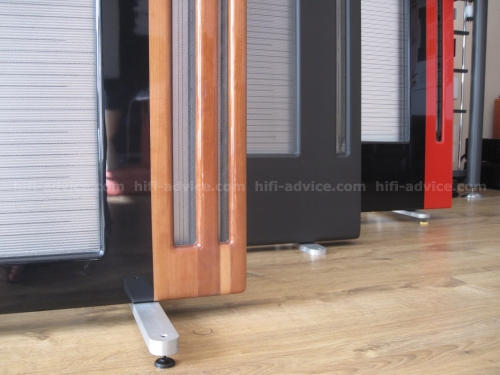
System Synergy
Divas have a very different sound balance than the refurbished Duetta Signatures, or any original set of Duettas for that matter. But bear in mind that this set of Divas differs from the standard in terms of cabling and crossover components. These babies are much more relaxed and well-balanced, so much so that they can sound restrained and undynamic if plunged into a system that was previously optimised for (Refurbished of not-) Duettas. I’ve had to carry out several seemingly small tweaks to get the balance just right again. First, I connected proper milled-from-solid-copper spades instead of the below-par bananas to the cables connecting amps to crossovers. The interesting thing was that because I had insufficient supply of the same bananas or spades, I chose to use the best ones on the bass and the lesser ones on the treble, thinking they would do least harm there. But imagine my surprise when the bass firmed up, became faster and more articulate, after I had replaced the midrange/tweeter’s bananas for the solid spades!
Now I was getting somewhere. Next, the model sixes were placed on Finite Elemente Cerapucs again (after I had disapproved of them in relation to the Magnepan setup), then I removed one spare Lapp cable (this alone removes some bass-blurring) and moved the pre- and power amps one position closer toward the extensionblock inlet, right next to the outlet for the subs. Also I moved the Rowland Aeris DAC in the other extensionblock one position closer toward the inlet, leaving only the AAZ Ultra Flow and the Levinson CD player in front of it. Then I tightened the bottom level of the audiorack, which normally hangs freely suspended from the top. This almost brought me all the way there. I just wanted a little bit more slam and control in the bass. So I disconnected the BPSses from the sixes. Yup: tighter and a little faster, but also a lot drier and overall less romantic. The sound was now very nimble but also a little business-like. So back on went the BPSses. (mind you: I rarely switch them on; simply having them connected already has a big influence). Then, as by accident, the final tweak brought me to Walhalla: replacing the standard spikes and cups with SoundCare super spikes.
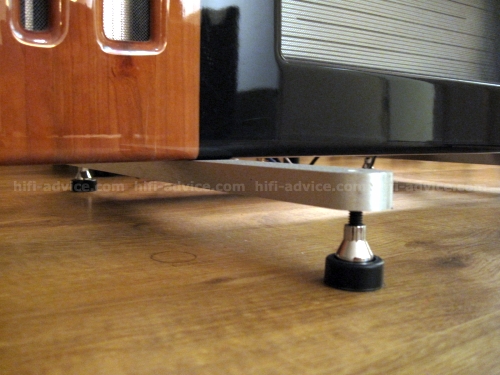
SoundCare super spikes
The SoundCare super spikes really were not a conscious choice but rather one born out of neccessity. You see, I did not get spikes when I bought the Divas so I borrowed the ones from the Duettas. I couldn’t source the particular size needed (5/16″) so turned to a brand from which I knew that they also made spikes for US-sourced speakers: SoundCare. Substituting the regular hardened steel spikes and Finite Elemente Spider spike bases for the super spikes made such a large difference that made JW and me stammer at each other in disbelief. How was this possible?! The bass sounded as if previously the subs were off and now they were switched on. Well, that’s perhaps overstating it. But there was really more bass using the Soundcare spikes in place of normal spikes. Not only did the bass gain mass, it also went deeper. Second: the midrange now sounded much more natural, fuller and more harmonically rich. Lastly: treble was now airier and more fluid. The effect reminded me of what the super-expensive Harmonix RF-909X Spike Bases had done for the Magnepans. But at a tenth of the price. It is not often that you come across a cheap tweak that really delivers. But this is it!

Bananas bananas spades
For the speaker-swapping-party that preceded the Diva review that you are now reading I used simple van den Hul speaker cable, with different connectors. I prefer spades but I didn’t have enough in stock so for some cables I used both spades and two versions of bananas. I know from earlier experience that some bananas are bad but I just had to take a listen. The first set of speakers were the refurbished Duetta Sigs. As I know now, they are overly dynamic and even shouty and as such, I didn’t notice the detrimental effect of the bananas. But when applying the same cables to the Divas, clearly it was a mismatch, as I quickly found out when substituting the bananas for spades.
Of course most audiophiles know that loosy connections are best avoided and so did I, but for this particular instance I figured that the damage done would not be so huge. After all: I connected the bass using excellent quality hollow bananas that have a very tight fit and used the loosy bananas on the midrange and treble. I figured if anything the midrange would lack some punch and the treble would be more airy than solid, which I actually like. But upon swapping the loosy bananas for milled-from-solid-copper spades, the difference was astounding, and not in the areas where you’d expect. The big difference was in the bass, which was now more solid, punchier, better timed and more articulate. All this without touching the actual bass cable and connectors. This explains once more that perceived improvements in one area of the spectrum can stem from changes to other parts of the spectrum. More precisely: perceived bass quality has a lot to do with the quality of the midrange. Likewise, somehow, treble air and soundstage depth have a connection with the bass quality and depth.
With reinvigorated spirit, reinforce by the above, I decided to vigorously test the different connectors at hand against each other. There’s the entry level (no-name) banana, the LOK Gold plated Beryllium copper hollow banana and two milled-from-solid-copper spades: one with Rhodium plating, the other with Gold plating.
The entry level bananas sound tired and unmotivated. Pace is slow, focus is suboptimal and dynamics are compressed. Switching to the LOK Gold plated Beryllium copper hollow bananas made for a huge jump in tightness, dynamics and bass articulation. Pace picked up and focus also improved. Switching to the Gold plated LOK spade made for a very similar sound, but with a slighty tilted frequency balance: bass was fuller, treble was darker. Tightness and PRAT seemed about the same, maybe a little less. But in turn there was definitely a richer, more full-colour sound, making for a more romantic presentation. Moving from Gold plated spades to Rhodium spades was almost like switching back to the LOK banana in terms of speed, dynamics and drive, but with bass and midrange fulness intact. Treble was definitely more articulate and open than with the Gold plated spade and also a notch above the Gold LOK banana. The Rhodium spade made for a slightly more business-like sound (or more neutral if you will) but the sheer openness, making for higher perceived resolution in the midrange and treble made them the best match for my system that currently uses Apogee Divas. They are less open sounding/forward than the Duettas, or Magnepans for that matter, so I’d wager that the Gold Plated spades would match better with either other pair of speakers.
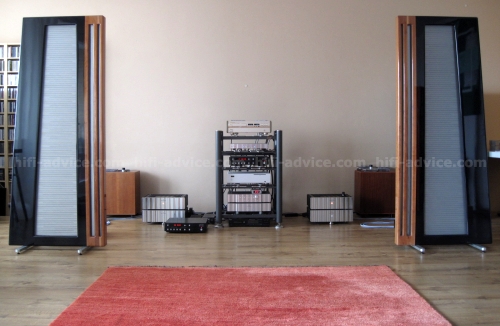
CONCLUSION
Like I already wrote in the Duetta review: speaker reviewers at the time weren’t wrong: Full Range Apogees really are something special. Most incredible is their bass performance: at once deep, full, dynamic and fast. While Divas don’t sound so full and weighty as Duettas, they do go very deep and can pack incredible power. Play deep house tracks and you’ll be flabbergasted: what? No subs? But I am a bit spoiled and like my bass to be a little fatter and the Duettas (any pair) really catered to that. So I use the Divas with modestly set up Rel Strata III subs: filtered to add bass below 30hz only.
Even more so that Duettas, Divas are very, very neutral and natural but for all their honesty, they are never clinical or threadbare. It seems that the larger midrange ribbon, covering most part of the frequency spectrum, really delivers. I’m talking electrostatic vocal purity, minus the dynamic restraint of most electrostatics.
The separate true ribbon tweeter seems to help as well, bringing the Apogee sound closer to the treble performance of the Magnepan MG3.6R. However, the Maggies’ treble is still airier and also a little bit more refined. But on other accounts it is absolutely no comparison. In my view any full range Apogee will easily win from any Magnepan, and most importantly, Divas are very, very pure and honest. Much more so than any Magnepan I’ve heard.
To some extent, Divas seem to combine the best of Magnepan with the best of themselves, to make for a speaker that is dynamic and lively as well as highly resolving and very refined. They handle all kind of music well, except perhaps for hard rock, which can sound a little too clean. That’s honesty for you I guess. They are definitely revealing but they normally don’t punish you for listening to badly recorded music.
It is important to note that, unlike Duettas, Divas don’t sound good at all if you don’t take real good care setting them up. You’ll need to invest plenty of time tweaking them (and adjusting your system to them), finding the exact spot in the room, matching electronics etcetera. Duettas also reward with better sound when tweaked with care, but they already sound impressive even if you set them up all wrong. Do the same with Divas and you’ll be sorely disappointed. Oh and they need good healthy power amps, much more so than the Duettas. Their impedance at 3 ohms isn’t that mean and sure you can drive them with low powered tube amps or a home cinema receiver and nothing will break. But it just won’t sound fantastic. While my Rowland sixes seem to be stable at all times driving the Divas, I can imagine that the sound could be even more solid when applying beasts of amplifiers. But I gather that they would also diminish the subtleties in sound that I am so fond of. But whatever amp you choose to use, be sure to bring high-end electronics to the table and treat the Divas with love and care and lots of patience and you’ll end up with speakers that are very, very hard to beat.
Update April 2015 – Original Crossovers
Recently I was in the fortunate position to have met a guy named Roy who also has Divas, with original crossovers. He kindly drove by with his crossovers so that we could do some comparative tests. This turned out to be very enlightning. First, it was quickly evident that my newly built crossovers had a similar sound balance and also made my Divas sound somewhat dark. Second the polarity connections for the drivers were absolutely the same as on my crossovers, meaning that the best sound for me was with bass and midrange reversed (see image above).
Interestingly the original crossovers did have slightly more treble air, and slightly better clarity through the midrange, but the price was to be paid in the bass department: sure the bass was still fine, but definitely less powerful and less voluptuous. Also timbre was more gray than with my crossovers. Much is said about the switches deteriorating, but in this case I found no evidence of this. On balance the differences were clearly audible, but my crossovers absolutely did not render the originals unlistenable. Actually, considering the cost of rebuilding these crossovers, I can imagine that it is more economical to just leave the originals as they are, and experiment some more with cables instead, to achieve a fuller sound balance.
My method + treble also inverted + toe in
After all this, one thing remained for me to try: to use my method of inverting bass and midrange at the crossover output side, but also inverting treble, meaning that all drivers are again connected essentially using the official method, but with absolute polarity for all drivers inverted at the crossover output side. Sure enough this re-introduces the treble problem, but if given enough toe in (at least 6,5cm between the speaker’s front feet with a listening distance of 470cm and the speakers 244cm apart) , the treble returns, this time prefectly integrated, and without comb-filter effects.
Why did I not try this earlier? Well, none of the other Apogees worked well with any toe in, resulting in my belief that no Apogee speaker should have any toe in. Apparently the Divas are different that way. With this much toe in however, the soundstage tends to be more confined to the speakers’ width.
So, it seems that Apogee were right in the way they connected the drivers, and Henk van der Hoeven did indeed replicate the connection method one on one. But the drivers’ relative phase to each other notwithstanding, it remains necessary for me to invert polarity for all drivers on the crossover output side.
Update April 2015 – more crossover connection tests
Official connection method
Connected as officially intended, with all plus inputs on the plus outputs, which corresponds to bass firing rearward, mid firing forward and treble firing backward when connected with a battery, the sound is most coherent. It is easy to hear that this is how the speaker is intended to play. But I also find it way too laidback that way, compared to Duettas. And most importantly, when connected this way and with the speakers having zero toe in, somehow treble is cancelled in the listening spot. I’m not sure if this is indeed a comb filter effect or simply the baffle/cover preventing wide spreading, but the only way to hear the highest treble is to either sit on axis of one speaker, or to toe them in severely. In case of using a lot of toe in, I do get sufficient treble in the listening position, but the feeling of the sound being too much laidback remains. Bass just doesn’t have any real power, and also the midrange seems withheld. I’m sure that more agressive/more forward sounding equipment might yield a different balance (not curing the treble problem though, as evidenced by visiting other people’s Diva setups), but please bear in mind that I have been using the same system with a range of Duettas as well as Centaurs and Centaur Majors and of course the Magnepan 3.6’s, and none of those speakers sounded the slightest bit laidback.
My connection method (bass and treble reversed)
My connection method however does exhibit severy comb filter effects, with peaks and throughs when moving my head horizontally over a distance of 20cm, and the treble ribbon being in wrong phase relative to the others makes for less than ideal imaging.
Input polarity
Changing polarity on the crossover input side (amp output) only makes things worse, no matter what connection method is used on the crossover output side.
christiaan punter

This review originally appeared in Christiaan Punter’s website Hifi Advice (www.hifi-advice.com)
Stereo Times Masthead
Publisher/Founder
Clement Perry
Editor
Dave Thomas
Senior Editors
Frank Alles, Mike Girardi, Russell Lichter, Terry London, Moreno Mitchell, Paul Szabady, Bill Wells, Mike Wright, and Stephen Yan,
Current Contributors
David Abramson, Tim Barrall, Dave Allison, Ron Cook, Lewis Dardick, John Hoffman, Dan Secula, Don Shaulis, Greg Simmons, Eric Teh, Greg Voth, Richard Willie, Ed Van Winkle, Rob Dockery, Richard Doron, and Daveed Turek
Site Management Clement Perry
Ad Designer: Martin Perry





Be the first to comment on: APOGEE ACOUSTICS DIVA